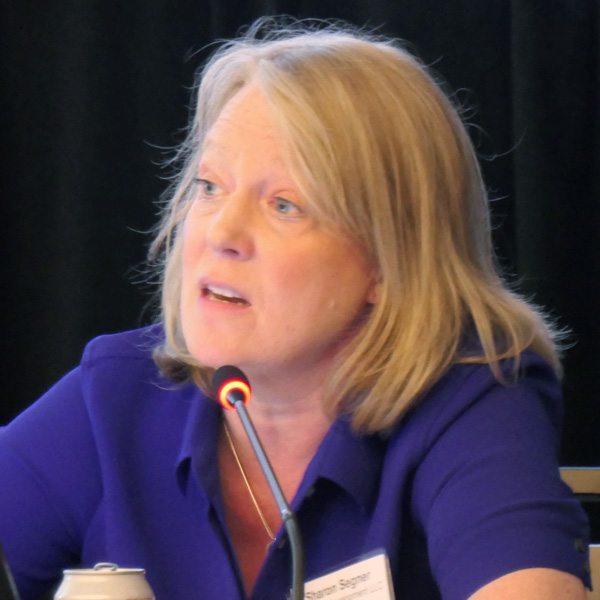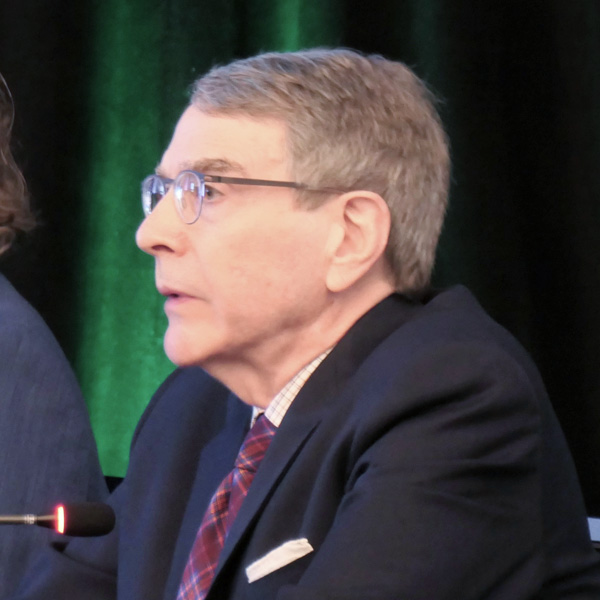FERC is moving forward on its examination of dynamic line ratings (DLRs), with the issuance of an Advance Notice of Proposed Rulemaking (ANOPR) on June 27 indicating the commission is considering requiring the transmission industry to adopt the technology (RM24-6).
DLR technology uses the latest weather forecasts and monitors other conditions — such as sunlight and wind speed — to more accurately reflect transmission line ratings, allowing for more efficient power flow and reducing congestion.
“Our success in ensuring reliability and operability of our nation’s transmission grid requires work on many fronts,” FERC Chair Willie Phillips said in a statement. “Last month, we took the major step of issuing Order No. 1920 to determine how to plan and pay for transmission facilities that our nation will need. Today, we are looking to wring efficiencies out of the grid so we can make the best and most efficient use of what we already have.”
The ANOPR reflects public comments FERC received from a Notice of Inquiry issued in early 2022 alongside Order 881 that required transmission line ratings to reflect ambient air temperatures. (See FERC Opens Inquiry on Dynamic Line Ratings.)
FERC will collect more information on DLRs based on specific questions it asks in the ANOPR before potentially moving forward with a proposed rule. Comments are due 90 days after the ANOPR’s publication in the Federal Register, and replies are due 30 days after that.
Despite its earlier work, some implementation issues for DLRs still need to be worked out, Phillips said at a press conference that followed FERC’s monthly open meeting.
“We look forward to moving as quickly as possible … to get a final rule in place,” Phillips said. “We can’t just build our way to where we need to go. We have to get as much as we can out of our existing system if we have any hope to not just reach goals, but to also serve our consumers reliably.”
The factors that can change a line’s capacity include solar heating, cloud cover, wind speed and direction. The ANOPR asks whether hourly solar conditions should be reflected in all transmission line ratings and how to determine which lines would benefit from reflecting hourly wind conditions.
The ANOPR had not been published as of press time. But a FERC fact sheet noted that reflecting hourly solar conditions would not require utilities to install any equipment to monitor them. But it “would go beyond the simple day/night considerations in Order No. 881 by requiring hourly forecasts of solar intensity and cloud cover events.”
Wind conditions have the highest impact on line temperature out of any weather condition, but reflecting them does require the installation of sensors and communication equipment. “Recognizing this potential added cost, the ANOPR specifies that transmission providers could be required to reflect wind conditions in ratings only on lines that … are heavily congested and located in geographic areas with windy conditions,” FERC said. It seeks information on how congestion levels and environmental factors could identify the lines that would most benefit from better monitoring wind conditions.
It also seeks comment on new methods for measuring congestion and other related data.
Commissioner Allison Clements said that not implementing DLRs leaves significant benefits and cost savings on the table.
“This has been a long time coming,” Clements said. “We first voted on DLR issues in December 2021. That’s nearly three years to move the ball forward several yards — with most of the field yet to cover. Best case, we are looking at another year for the NOPR and then a final rule, plus compliance and implementation after that. All of this emphasizes the need for good, thoughtful comments in response to this ANOPR, which sets up a promising framework.”
LineVision, which makes the sensors that are sometimes required by DLRs, welcomed the ANOPR.
“With demand spiking, extreme weather intensifying and increasing congestion straining overall grid capacity, today’s decision by FERC to initiate a rulemaking will help to ensure that dynamic line ratings become an even more critical tool in the toolbox to achieve a commonsense solution: squeezing all the capacity that we can out of our existing grid,” LineVision Vice President of Policy Hilary Pearson said in a statement. “We appreciate FERC’s continued leadership in advancing transmission line ratings solutions and pursuing criteria for DLR to help support just and reasonable rates.”
Advanced Energy United also welcomed the proposal.
“Transmission operators aren’t maximizing the potential of our power lines, leading to unnecessarily high energy costs for consumers,” Managing Director Caitlin Marquis said. “Dynamic line ratings are one of the most cost-effective tools we have for getting more out of our existing power grid infrastructure.”
Clements’ Last Meeting
The meeting marked Clements’ last as a commissioner; her term ends June 30.
She said she was particularly proud of the commission’s recent major orders: 1920 on long-term transmission planning and cost allocation and 2023 on generator interconnection rules. Also, she was glad to help set up the Office of Public Participation.
“At this moment in time, when facts on the ground are changing so quickly, it is difficult to regulate at the pace necessary to keep up,” Clements said. “I urge the new commission to lean in and take a proactive approach to reliably and affordably adapting to the energy transition that is underway. Regulation will fail if it is deemed ‘ideological’ to try and skate where the puck is going. More than any time in our memory, the commission’s regulations must be nimble in the face of a changing energy system and new threats.”
New Commissioner David Rosner sat in on the meeting, though he did not vote on any items because he had not had enough time to properly review them since being sworn in. His taking office means FERC is at no risk of losing a quorum once Clements leaves. He will soon be joined by Judy Chang and Lindsay See once they are sworn in.

